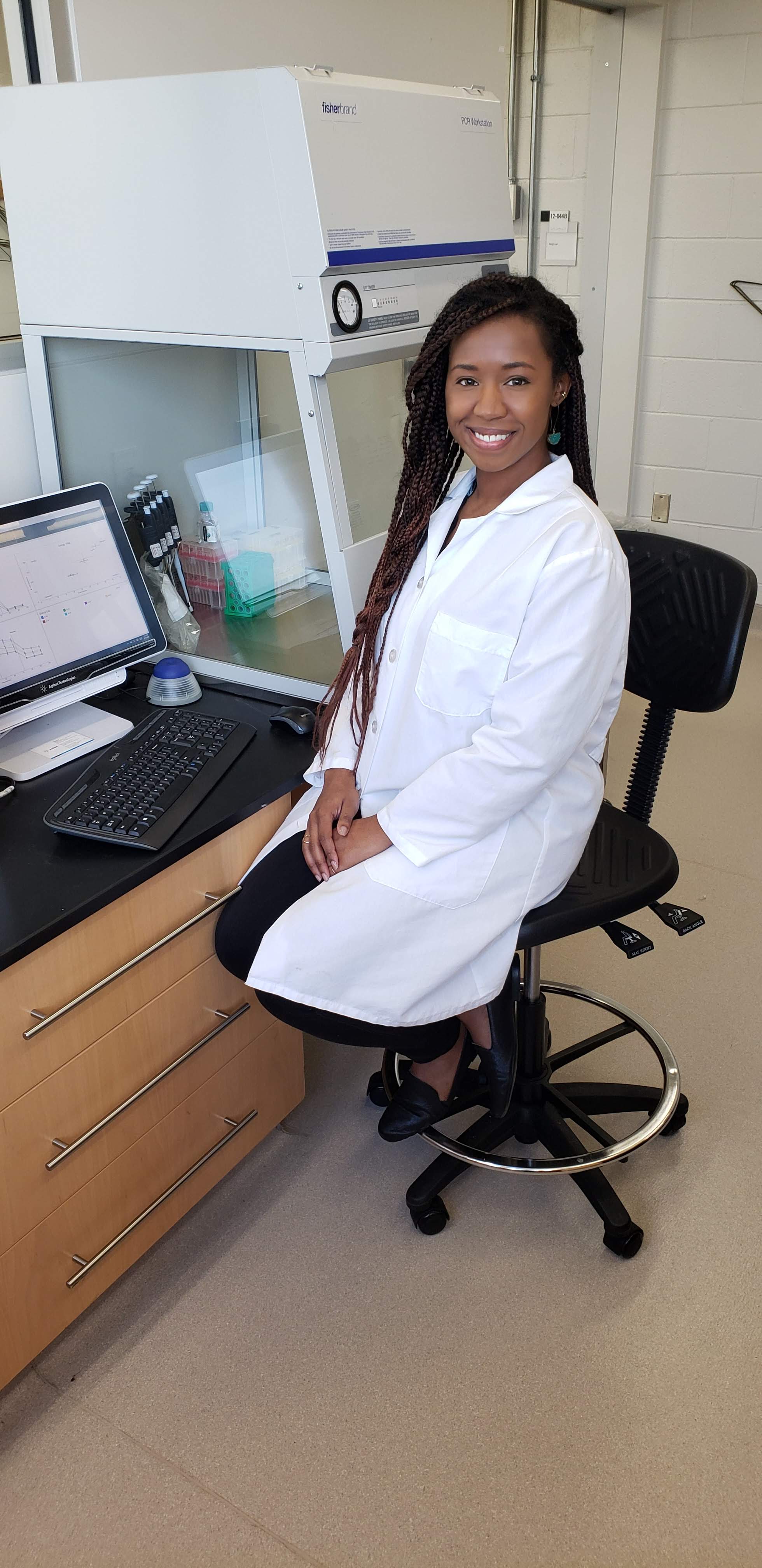When researching doctoral degree programs, Gladys Shaw, a native Richmonder who attended Virginia schools for her undergraduate and graduate degrees, knew she wanted to stay local. Not only was Virginia Commonwealth University close to family, the school just felt right to her.
“I wanted somewhere that automatically felt like home,” says the Ph.D. candidate in the Neuroscience Program. “Seeing the faculty and the support that they give you, VCU was the school for me.”
When she was accepted into the School of Medicine, Shaw also received an invitation to apply to the Initiative for Maximizing Student Development Scholars Program. Since 2010, the VCU Center on Health Disparities has housed IMSD and several other research and training programs funded by National Institutes of Health grants. The programs are designed to expand the pipeline of underrepresented students into STEM-related careers.

Neuroscience Ph.D. candidate and IMSD Program participant Gladys Shaw won a poster competition at the American Association for the Advancement of Science 2019 meeting.
Now a fourth-year student, Shaw has found that opportunities on the MCV Campus have laid a foundation for success. In 2019, she attended the American Association for the Advancement of Science meeting in Washington, D.C., where she presented her preclinical research on stress and its effects on the teenage brain. She had previously attended an AAAS meeting and displayed her work, but this time she won the poster competition in the Brain and Behavior category.
She relished the experience of sharing her work with fellow scientists and other guests who were invited to attend the day she presented. “Any chance that I get to talk about science I’m going to take it,” she says. “It was an amazing practice of making my science palatable to both scientists and nonscientists.”
Diversity in the sciences: ‘We need that community’
Shaw’s presentation at the AAAS meeting is just one example of the type of experiences IMSD is meant to create for students, says Joyce Lloyd, Ph.D., who serves as one of the principal investigators on the IMSD grant (funded through 2023), along with Hamid I. Akbarali, Ph.D., professor in the Department of Pharmacology and Toxicology. Lloyd also runs the other CoHD pipeline programs.
“It’s important to have programs like this so that we’re getting all the talent into the various fields,” says Lloyd, who also serves as professor and vice chair of education and faculty affairs in the Department of Human and Molecular Genetics. “If we don’t have the same percentage of underrepresented individuals in the programs as are in the population, then we are still missing talent.”
Passionate about the IMSD program, Shaw knows only too well the importance of its mission. She had three Black science teachers throughout her educational experience, one in middle school and two in college.
“I believe that just seeing representation, not feeling like you’re the only one, and starting from an early age, is how we’re going to increase diversity in science,” she says. “IMSD not only promotes diversity in the sciences, but it also fosters mentorship and paying it forward to others.”
Being part of the IMSD program with colleagues striving for the same goal has provided welcome support and camaraderie.
“We’re not all in the same field, but we all have that mindset that we don’t want to be the only ones,” Shaw says. “We need that community to get through certain things such as the lack of visual representation within our respective fields, historical mistreatment of Black, Indigenous and people of color in medicine, continuing racism and racial inequality and micro- and macroagressions that may not even cross the minds of people who don’t come from backgrounds like ours.”
A scientist in the making
Shaw works in the lab of Gretchen Neigh, Ph.D., an associate professor of anatomy and neurobiology. Shaw’s dissertation explores how chronic trauma can modulate or change brain energy. She is especially interested in how stress impacts different genders during adolescence, particularly with the increase of sex hormones.
“Looking at how the surge of hormones happens, specifically in adolescence, and how that modulates behavior in adulthood is really interesting to me,” she says. “And how something like chronic stress, bullying or fear can change the trajectory of the organism as a whole for the rest of its life is astonishing.”
Shaw served as the lead author on a recent paper written with other researchers in Neigh’s lab about the intersection of chronic stress and trauma. Their findings were featured in May 2020 in Brain, Behavior, and Immunity, the journal of the PsychoNeuroImmunology Research Society.
After finishing her doctorate, hopefully in 2022, Shaw is considering a career as a medical science liaison, a profession she learned more about with assistance from Lloyd. Medical science liaisons are specialized health care consultants who keep the line of communication open between drug companies, scientists and physicians. Lloyd introduced Shaw to an alumna from another of the CoHD programs, who works in the field. The two connected and spoke multiple times.
“Knowing someone that I can identify with who has a similar background is just amazing,” Shaw says. “Dr. Lloyd is adamant about using her connections to help us expand our networks. She does that with all of us in the IMSD program, which is a huge time commitment, but she makes sure that she gives us what we need to reach our goals.”
Whatever path Shaw takes, Lloyd believes that, as an independent thinker, her talents and skills will serve her well.
“She’s always questioning, and that’s what a scientist needs to do,” Lloyd says. “A Ph.D. is the leader of the team. They’re training the next generation. Gladys will be a great teacher, whether in the academic setting or the industry setting, whatever she chooses to do.”

